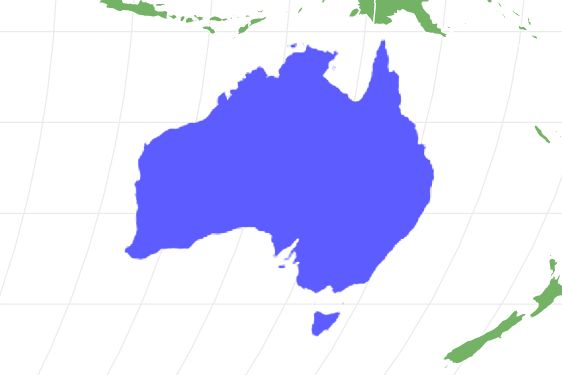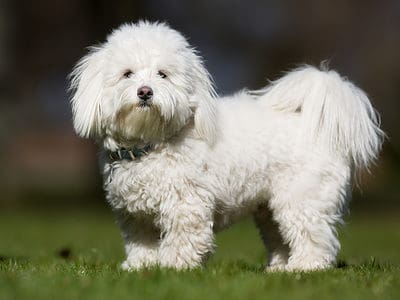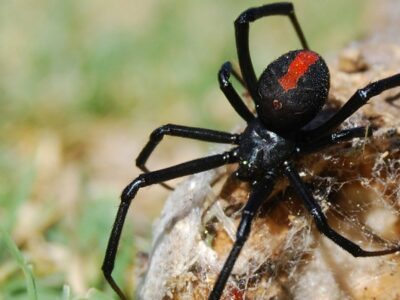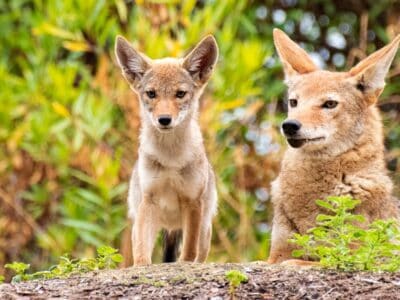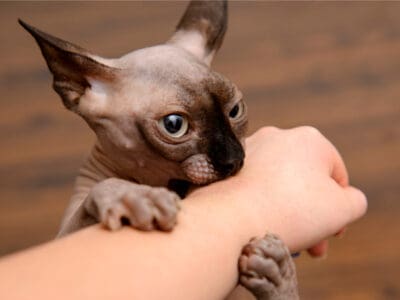Makes runways through the long grasses!
Advertisement
Quokka Scientific Classification
- Kingdom
- Animalia
- Phylum
- Chordata
- Class
- Mammalia
- Order
- Diprotodontia
- Family
- Macropodidae
- Genus
- Setonix
- Scientific Name
- Setonix brachyurus
Read our Complete Guide to Classification of Animals.
Quokka Conservation Status
Quokka Facts
- Prey
- Grasses, Leaves, Fruits
- Name Of Young
- Joey
- Group Behavior
- Family units
- Fun Fact
- Makes runways through the long grasses!
- Estimated Population Size
- 20,000
- Biggest Threat
- Habitat loss
- Most Distinctive Feature
- Rounded body, ears and snout
- Gestation Period
- 27 days
- Habitat
- Dense vegetation close to water
- Predators
- Foxes, Cats, Dogs
- Diet
- Herbivore
- Average Litter Size
- 1
- Lifestyle
- Nocturnal
- Common Name
- Quokka
- Number Of Species
- 1
- Location
- south-west Australia
- Slogan
- Makes runways through the long grasses!
- Group
- Mammal
Quokka Physical Characteristics
- Color
- Brown
- Grey
- Red
- Skin Type
- Fur
- Top Speed
- 20 mph
- Lifespan
- 5 - 10 years
- Weight
- 1.5kg - 4.5kg (3.3lbs - 10lbs)
- Length
- 40cm - 54cm (16in - 19in)
- Age of Sexual Maturity
- 10 - 12 months
- Age of Weaning
- 8 months
View all of the Quokka images!
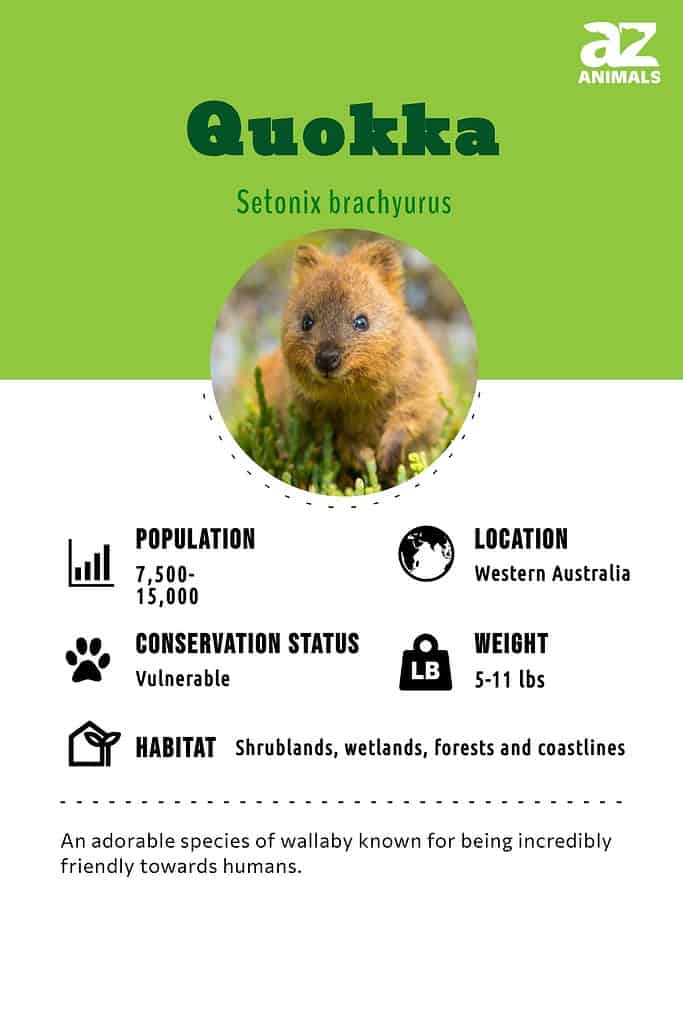
Classification and Evolution

Quokkas are a type of wallaby.
©fvanrenterghem / Flickr – Original
Quokkas are tiny marsupials that live in parts of southwest Australia and on two nearby islands in the Indian Ocean. The Quokka is one of the smallest types of wallabies in the world, and most distinctively differs from other members of its family with their short and scarcely-furred tail and small hind legs. Out of the roughly 50 known Australian marsupials, the Quokka is one of a handful whose ancestry is still difficult for scientists to trace. The fact that the Quokka scavenges for food rather than grazing makes it quite different from other wallabies, but despite all this, many agree that they are most likely relatives of the Rock Wallaby.
Anatomy and Appearance
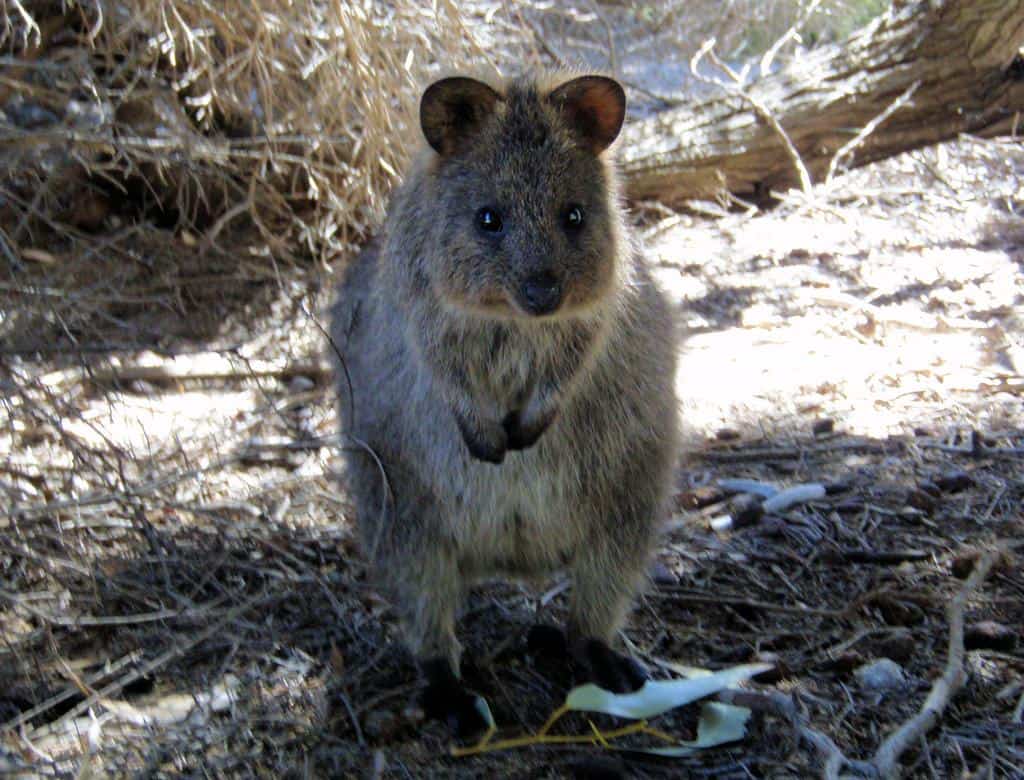
Quokkas are known for their cute, expressive faces.
©Ken and Nyetta / Creative Commons
The Quokka has a compact, rounded body. Their hind legs and tail are much shorter than those of many Wallaby species, but instead of disadvantaging the marsupial, their tiny limbs allow the Quokka to hop through dense foliage and tall grasses with great agility. The Quokka’s thick, layered fur is relatively coarse and typically a brownish-grey color with red flourishes around the head, with lighter in color on the underside. Along with its rounded body, the Quokka also has small and rounded ears and a rounded snout that comes to a point with a black nose. Unlike other Wallaby species, the tail of the Quokka has hardly any fur on it at all and they also don’t need it to balance whilst they are hopping along.
Distribution and Habitat
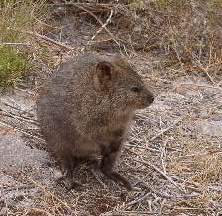
Rottnest Island is home to one of the largest quokka populations.
©Thomasgl at German Wikipedia / Public domain, from Wikimedia Commons, the free media repository – Original / License
Historically, the Quokka was an animal that had quite a wide distribution and was once found throughout the coastal regions of southwestern Australia. Today, however, the Quokka has been restricted to three remote regions, only one of which is actually on the Australian mainland. The most numerous populations of Quokka are found on Rottnest Island and on neighboring Bald Island, with a few isolated groups also inhabiting the bushland that surrounds the city of Perth on the mainland. In these island environments, Quokkas are most commonly found in thick forests, open woodland, and areas of scrub that are close to fresh water. Their preferred habitats are always close to water, and the Quokka can also be found along the edges of swamps.
Behavior and Lifestyle
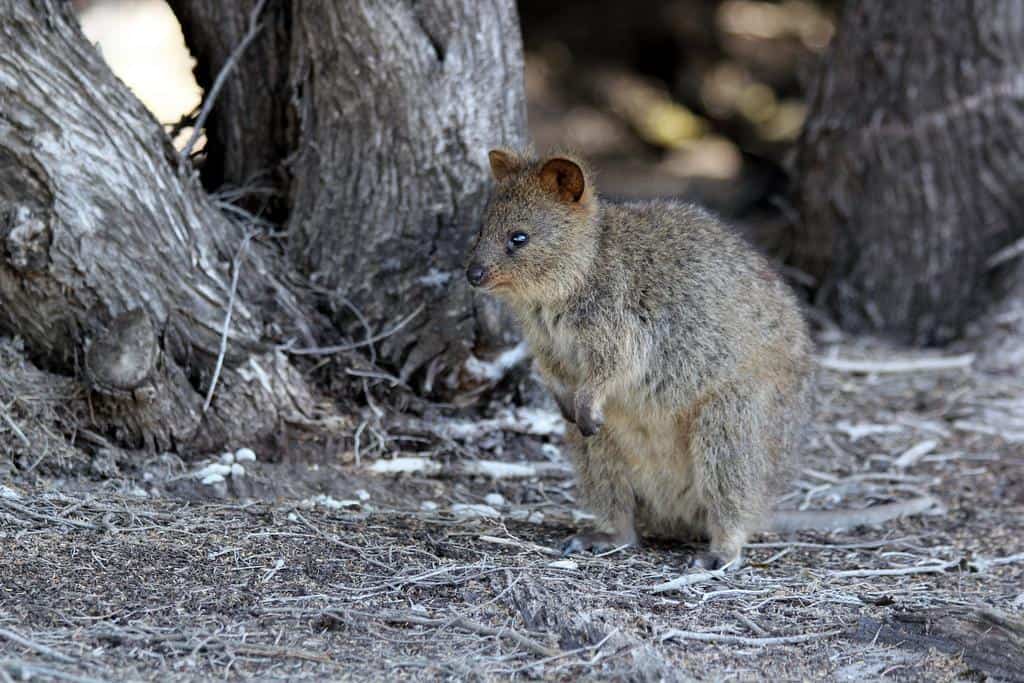
Quokkas are typically incredibly friendly toward humans.
©Matthias Liffers / Flickr – Original
The Quokka is a very sociable and friendly animal that inhabits southwestern Australia in small family groups, which are dominated by males. Despite this though, the Quokka is not known to be territorial with up to 150 individuals known to have over-lapping home ranges. Although they are known to share these habitats peacefully most of the time, fights between males are not unheard of, particularly on a hot day when they compete for the most sheltered spots. The Quokka is a nocturnal animal that spends most of the hot day, resting in the shade of the trees and will often return to the same spot every day. At night, the Quokka then begins to browse for food using tunnels through the long, grasses to move about unseen.
Reproduction and Life Cycles
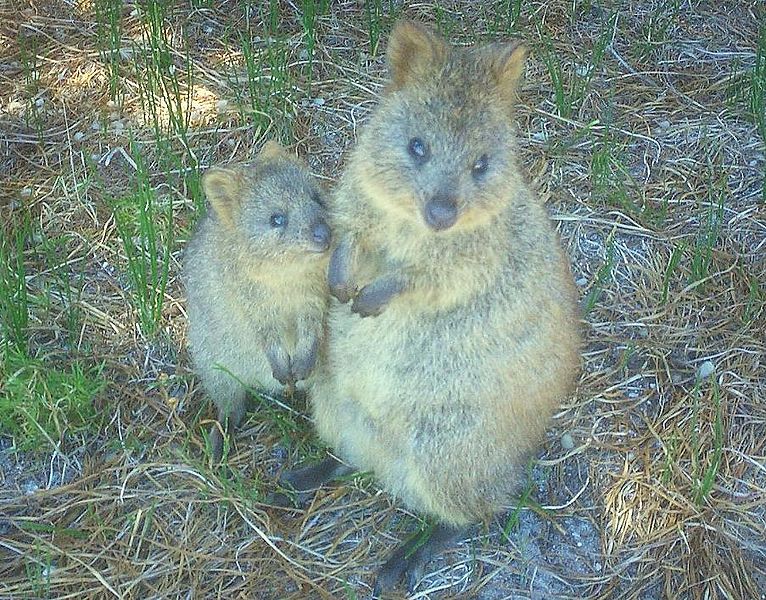
Quokkas are marsupials, meaning their babies spend the first few months after their birth inside the mother’s pouch.
©Raffi Kojian / Creative Commons – Original
The breeding season for the Quokka tends to occur in the cooler months between January and March when a single joey is born after a gestation period of just a month. Like all other marsupial babies, the joey manages to crawl into its mother’s pouch completely unaided, when it then attaches itself to one of the female’s teats. The Quokka babies suckle from their mother in the pouch for around 6 months whilst they continue to develop. At this time, the joey emerges for the first time and begins to explore its surroundings but remains close to the female, continuing to suckle on her milk for at least another couple of months. In captivity though, breeding can take place all year round once the individual is mature enough to mate at about a year old.
Diet and Prey
Like other Wallaby species, the Quokka is a vegetarian, meaning that its herbivorous diet is solely comprised of the surrounding plant material. The Quokka is an animal that most commonly feeds on different grasses that line that tunnels that they make through the dense vegetation. They are also known to eat leaves, fruits, and berries when they are available. Although the Quokka mainly browses for food on the ground, they are also known to climb about a meter or so up into the trees, and also swallow their food without chewing it. The Quokka then regurgitates the undigested material in the form of a cud, which is also eaten. They have no need to drink vast amounts of water and are said to be able to go for months without drinking at all.
Predators and Threats

Before European colonists reached the coastal regions of southwest Australia, the Quokka populations were thriving and were widespread throughout the area. With people, however, came domesticated predators like Cats, Foxes, and Dogs, and their settlements also attracted wilder animals including Birds of Prey and Dingoes. Since the introduction of these predators to the Quokka’s habitat, their population numbers have dropped considerably. They are also now restricted to small pockets of their natural habitat on mainland Australia due to the loss of habitat to growing Human settlements, as the demise of their daytime resting sites is thought to be linked to the declining population numbers.
Interesting Facts and Features
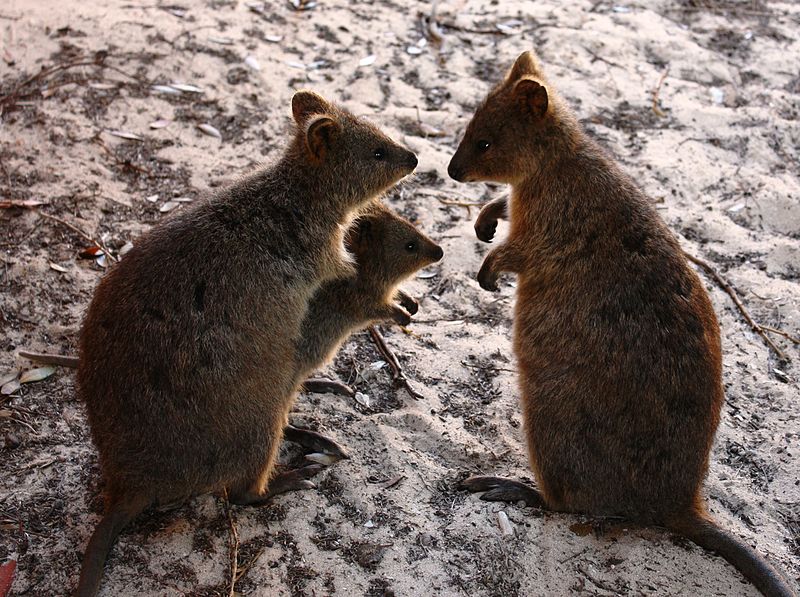
Quokkas live in family units located nearby other quokkas.
©Hesperian / Creative Commons – Original
Quokka family units are most commonly found in areas close to one another, where there is a decent source of fresh water. Even though they prefer these moist environments however, Quokka’s are known to actually gather most of their moisture from the vegetation that they eat, meaning that they can also be found in regions that are actually quite far from the nearest river or stream. Despite the obvious differences between the Quokka and other Wallaby species, their small size has enabled them to become masters of the undergrowth. The Quokka creates tunnels that they use as runways through the dense vegetation, which they are then able to hop extremely fast along when threatened by a predator.
Relationship with Humans
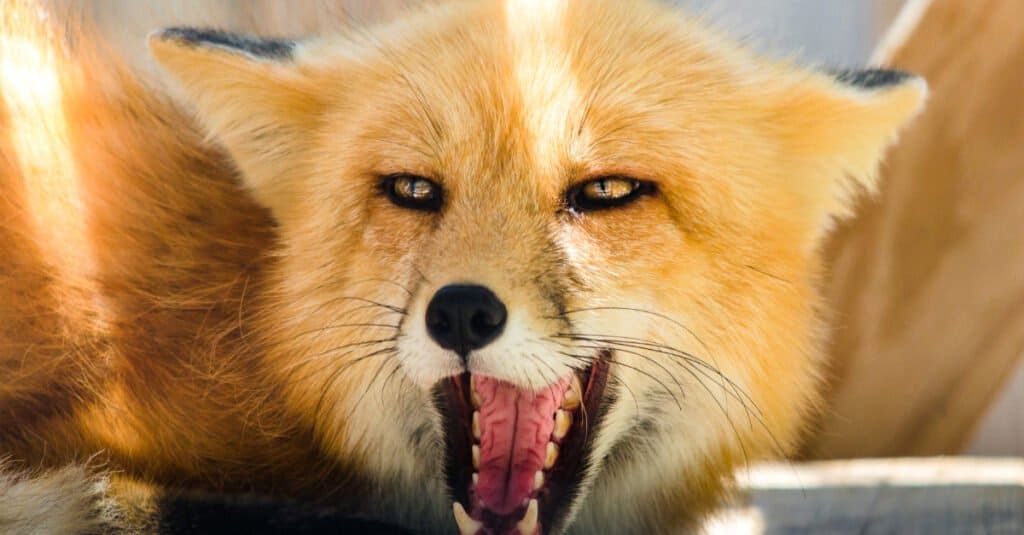
The introduction of the red fox to Australia has been a huge detriment to the livelihood of quokkas.
©iStock.com/Tyrannax
Since the 1930s, the Quokka populations have been isolated in three remaining areas (two of which are on islands) because of the introduction of foreign predators. The Red Fox that came to Australia with European settlers has actually caused the most damage to this ground-dwelling marsupial, as they were eaten on both the mainland and on the islands that the Quokka inhabited along the southwest coast. Now however, the Quokka populations on Rottnest Island in particular, attract numerous tourists every year and although the Quokka is very friendly towards these people, foods like biscuits that are fed to them, often upset their stomachs.
Conservation Status and Life Today
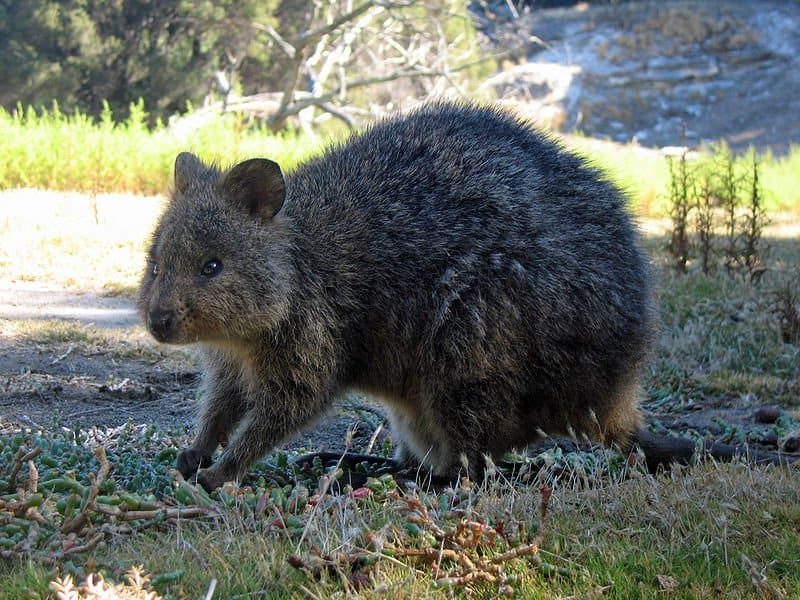
Quokkas are considered to be a Vulnerable species.
©Berichard / Creative Commons – Original
Today, the Quokka has been listed by the IUCN on their Red List as an animal that is Vulnerable in its surrounding environment. The highest populations are today found on Rottnest Island, along with Bald Island, where they are thought to be happily sustained due to the lack of Red Foxes. There are growing concerns over the Rottnest Island population due to increasing development on the island, mainly for recreational purposes.
More on Quokkas
View all 8 animals that start with QQuokka FAQs (Frequently Asked Questions)
Do Quokkas make good pets?
While quokkas might seem like they’d make good pets – they are often known as the happiest animals in the world – the reality is it’s illegal to own them. Australian law has a fine of up to $50,000 for interfering with quokkas. In addition, quokkas aren’t domesticated and are very social animals.
Are Quokkas herbivores, carnivores, or omnivores?
Quokkas are Herbivores, meaning they eat plants.
What Kingdom do Quokkas belong to?
Quokkas belong to the Kingdom Animalia.
What class do Quokkas belong to?
Quokkas belong to the class Mammalia.
What phylum to Quokkas belong to?
Quokkas belong to the phylum Chordata.
What family do Quokkas belong to?
Quokkas belong to the family Macropodidae.
What order do Quokkas belong to?
Quokkas belong to the order Diprotodontia.
What type of covering do Quokkas have?
Quokkas are covered in Fur.
What genus do Quokkas belong to?
Quokkas belong to the genus Setonix.
Where do Quokkas live?
Quokkas live in southwestern Australia.
In what type of habitat do Quokkas live?
Quokkas live in dense vegetation close to water.
What are some predators of Quokkas?
Predators of Quokkas include foxes, cats, and dogs.
How many babies do Quokkas have?
The average number of babies a Quokka has is 1.
What is an interesting fact about Quokkas?
Quokkas make runways through the long grasses!
What is the scientific name for the Quokka?
The scientific name for the Quokka is Setonix brachyurus.
What is the lifespan of a Quokka?
Quokkas can live for 5 to 10 years.
How many species of Quokka are there?
There is 1 species of Quokka.
What is the biggest threat to the Quokka?
The biggest threat to the Quokka is habitat loss.
How many Quokkas are left in the world?
There are 20,000 Quokkas left in the world.
How fast is a Quokka?
A Quokka can travel at speeds of up to 20 miles per hour.
How to say Quokka in ...
Thank you for reading! Have some feedback for us? Contact the AZ Animals editorial team.
Sources
- David Burnie, Dorling Kindersley (2011) Animal, The Definitive Visual Guide To The World's Wildlife / Accessed April 27, 2011
- Tom Jackson, Lorenz Books (2007) The World Encyclopedia Of Animals / Accessed April 27, 2011
- David Burnie, Kingfisher (2011) The Kingfisher Animal Encyclopedia / Accessed April 27, 2011
- Richard Mackay, University of California Press (2009) The Atlas Of Endangered Species / Accessed April 27, 2011
- David Burnie, Dorling Kindersley (2008) Illustrated Encyclopedia Of Animals / Accessed April 27, 2011
- Dorling Kindersley (2006) Dorling Kindersley Encyclopedia Of Animals / Accessed April 27, 2011
- David W. Macdonald, Oxford University Press (2010) The Encyclopedia Of Mammals / Accessed April 27, 2011
- Quokka Information Centre / Accessed April 27, 2011
- Quokkas / Accessed April 27, 2011
- Quokka Tourism / Accessed April 27, 2011
- Quokka Information / Accessed April 27, 2011
- Quokka Facts / Accessed April 27, 2011

